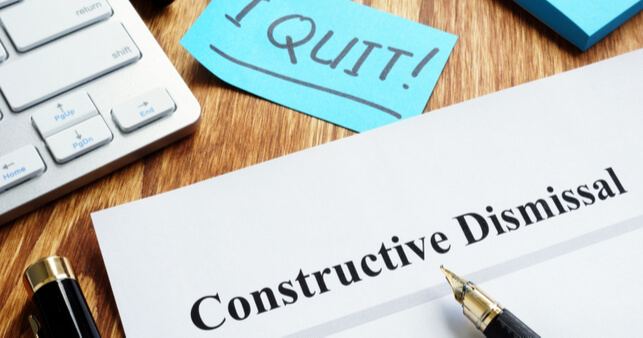
In cases where an employee feels their resignation was the only choice they had left to resolve a particular issue, they may claim a constructive dismissal. To put it even more simply, if one of your employees feels your actions, or lack of action, has made their working life so unbearable that they could not continue, this could constitute a constructive dismissal.
Categories
There are three categories which broadly define constructive dismissal:
• an employee given a choice between resigning, or being dismissed
• the employer deliberately acting to pressure the employee to resign
• the employer has acted so poorly towards an employee (by treating the employee highly unfairly) that the employee feels remaining in the job is no longer an option
In determining whether or not the termination of employment has been a constructive dismissal, it is not necessary for you to want the employee to resign. Ultimately it comes down to whether your actions, as the employer, caused the employee to resign, and whether the resignation was foreseeable. Also, a constructive dismissal does not need to be a result of one particular incident, it can be a series of actions or inactions.
What happens if an employee feels they have experienced constructive dismissal?
Where an employee feels their dismissal has been a constructive dismissal they could raise a personal grievance. If an employer is responsible for an employee being bullied to the point of resignation, this may be constructive dismissal.
If an employee intends on claiming constructive dismissal, as outlined in the process of a personal grievance, they need to claim within the 90 day period. Given a constructive dismissal can be due to a series of actions, or inactions, this 90 day period can be difficult to determine.
Examples
It can be difficult to understand the difference between an employee simply resigning, and an employee resigning and making a claim of constructive dismissal. To make it easy, some examples can be:
• an employee resigning after being maliciously told to perform unpleasant or menial work
• an employer failing to pay the employee’s wages on multiple occasions, or paying them late
• a significant reduction in work hours of the employee, following a decision made by the employer with no consultation or agreement
However, there are some cases where an employee has claimed constructive dismissal but the Employment Relations Authority has ruled that a constructive dismissal did not take place. One key example, which can easily happen in your workplace, is an employee resigning due to stress but not raising this as an issue with you to manage.
For advice or questions on dismissal, contact Employsure on 0800 568 012.










